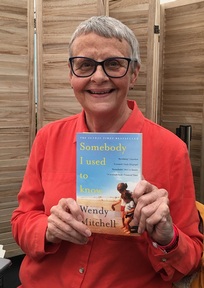Care homes advised to harness the power of social media
The competition for a care home is most often other homes in their area, as statistics from carehome.co.uk show the majority of people search by location more than any other classification. As might be expected with their greater resources, larger care home groups are already proving astute in embracing marketing techniques, but there is the risk that lone and smaller care providers will be left behind.

There is, therefore, a strong argument that care homes need to not only run offline marketing campaigns involving the local community but also powerful online marketing campaigns. Many relatives of residents may not know the local area of relatives needing care and more often than not their first point of call will be the Internet. So the need for care homes to have an online presence is crucial.
As the need for residential care grows in Britain the simple equation of supply and demand dictates that so will the number of care homes and care home groups. The growth and development of the group HC One established in November 2011 and now running leading care homes across Britain is a good example of the stakes being raised high for care homes in the future. This factor is made even more apparent by the often refusal by the press to print anything relating to care homes which isn’t negative in nature.
Davina Ludlow, trustee of the believes “it is important for care homes to promote the good care they provide not only to counter negative press but also to ensure they get new business.”
Care homes that promote themselves effectively can benefit in two ways - it not only assists them with business enquiries but it also helps to ensure good care is happening daily in care homes. Simply put, a home cannot market itself as a leading care provider if it is not providing a service that lives up to that classification.
Debbie Leven, founder of PRCoach.co.uk, a PR coaching programme for health and social care service providers, has found many care homes are failing to market themselves effectively both through traditional methods and through low cost methods such as social media.
Ms Leven attributes this reluctance to the “fast pace of change, particularly with social media, which can feel overwhelming”.
She said: “I’ve had a number of conversations with those who own or run care homes about this. Some are interested in social media but don’t know where to start and struggle with wading through the masses of social media ‘noise’ to find the right networks and media to use. Some cite lack of technology or say that they don’t have the time. I think that applies to both using social media and doing PR. I think the issue really comes down to not seeing either as a priority, or understanding their value, otherwise they would find the time.”
The larger care home groups seem to have cottoned on much quicker to the need to market themselves and use social media to create or maintain a presence both online and offline in their local community.
Anchor, one of the largest provider of housing, care and support for older people throughout England, run a number of advertising campaigns through the year. Examples of these campaigns are; ‘Buy one week of respite care and receive the second week free’ or ‘Buy two weeks of convalescence care and get two weeks free’. They also actively use social media.
Kathryn Charles-Wilson from the digital marketing team at Anchor said: “We use social media to share examples of best practice, customer and colleague news, achievements and events, our policy position on issues impacting us as a social landlord, in addition to all our marketing offers, campaigns, and open days.”
For a group like Anchor with a large number of homes, the task of marketing is a large one indeed. However for individual homes, a small amount of planning and time a day can pay dividends.
Tips for simple marketing for care homes:
1. Keep your website up to date. Make sure if someone is trying to contact you they can find you.
2. Make sure someone from your home is promoting the home on social media. At first you could just pick one form of social media – such as Twitter, which is easy to use and far reaching. Encourage the relatives of your residents to follow you and tweet about anything you think is of interest such as what the relatives have been up to, activities and your daily news. This is a good way of keeping relatives of your residents in the loop and you may also catch the eye of someone looking for a care home.
3. Hold an open day and invite members of your local community. This isn’t only a good way of making contact with those who may one day be looking for you but also a nice event for residents and their families.
4. A simple way to promote your care home is on www.carehome.co.uk, which features at the top of search engines for thousands of care home related searches. This is important as in in recent years search engines have become and will more than likely remain the main tool for those looking to find care and care homes.
Healthcare marketing expert Nick Fennell of believes that enhanced listings on carehome.co.uk are a driving source behind new leads for care homes. He states; “I always recommend the enhanced listing on carehome.co.uk for my clients and when used in conjunction with our other marketing methods and systems the results are extremely powerful.”
It is widely understood that the searcher is rarely the person who will become the resident but the family of such, is likely to be younger and Internet savvy. For the vast majority of care home related key words typed into search engines carehome.co.uk is displayed as the most relevant website and is therefore the most used directory site in the sector.
If you would like more details on enhanced listings you can click here: www.carehome.co.uk/advertise.cfm/page/webadvertise
Latest Features News
 25-Nov-19
2019 Election: Boris Johnson leaves social care in 'too difficult box' but Labour vows to end 'crisis'
25-Nov-19
2019 Election: Boris Johnson leaves social care in 'too difficult box' but Labour vows to end 'crisis'
 18-Oct-19
Podcast: Wendy Mitchell and dementia: 'My biggest fear is not knowing who my daughters are'
18-Oct-19
Podcast: Wendy Mitchell and dementia: 'My biggest fear is not knowing who my daughters are'
 27-Sep-19
Exclusive: Care minister backs care workers' call for time off to grieve and attend funerals
27-Sep-19
Exclusive: Care minister backs care workers' call for time off to grieve and attend funerals
 19-Sep-19
Podcast: Gyles Brandreth says poetry helps ward off dementia
19-Sep-19
Podcast: Gyles Brandreth says poetry helps ward off dementia
 30-Aug-19
Edinburgh Fringe funnyman joins comics facing toughest audience at care home gig
30-Aug-19
Edinburgh Fringe funnyman joins comics facing toughest audience at care home gig